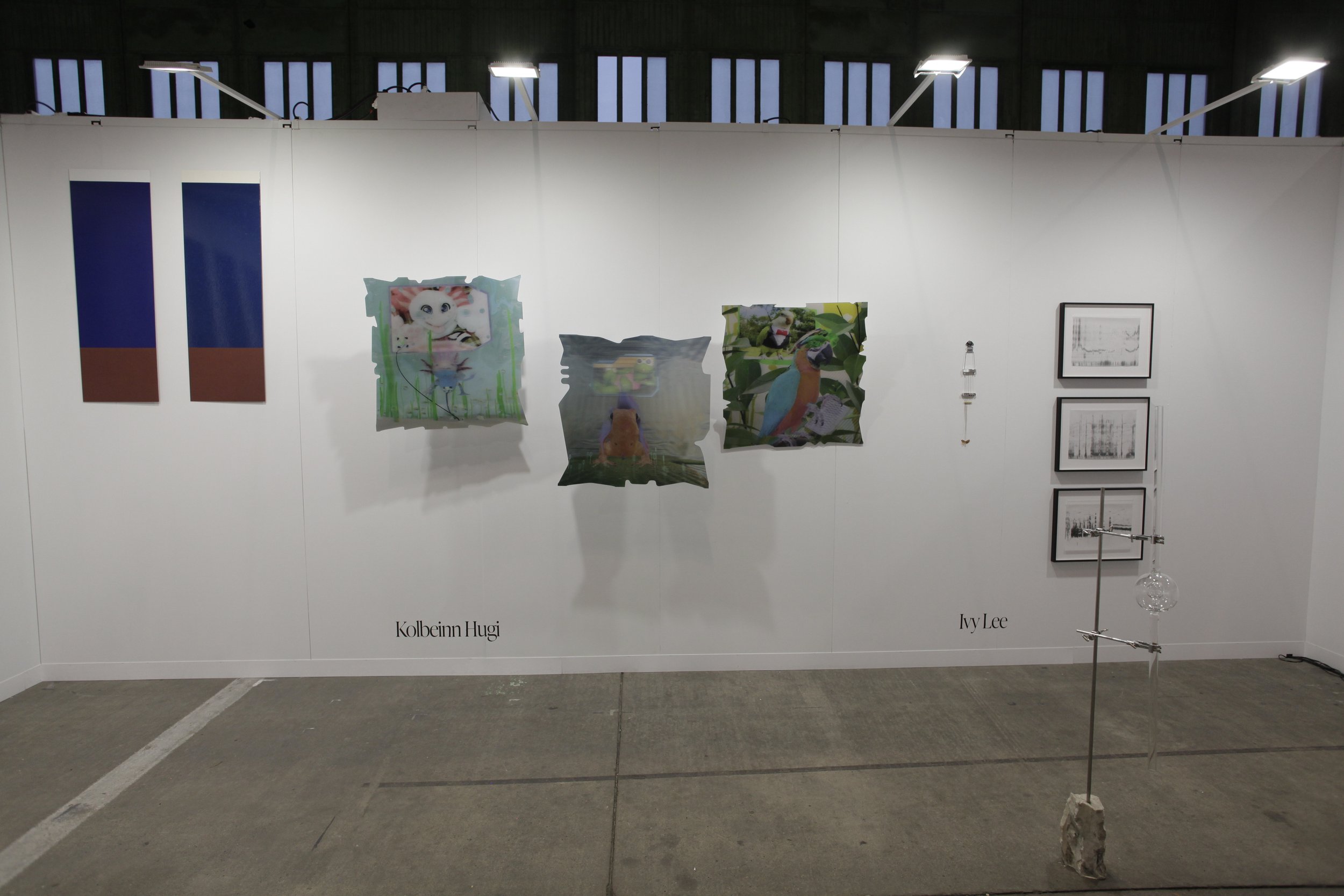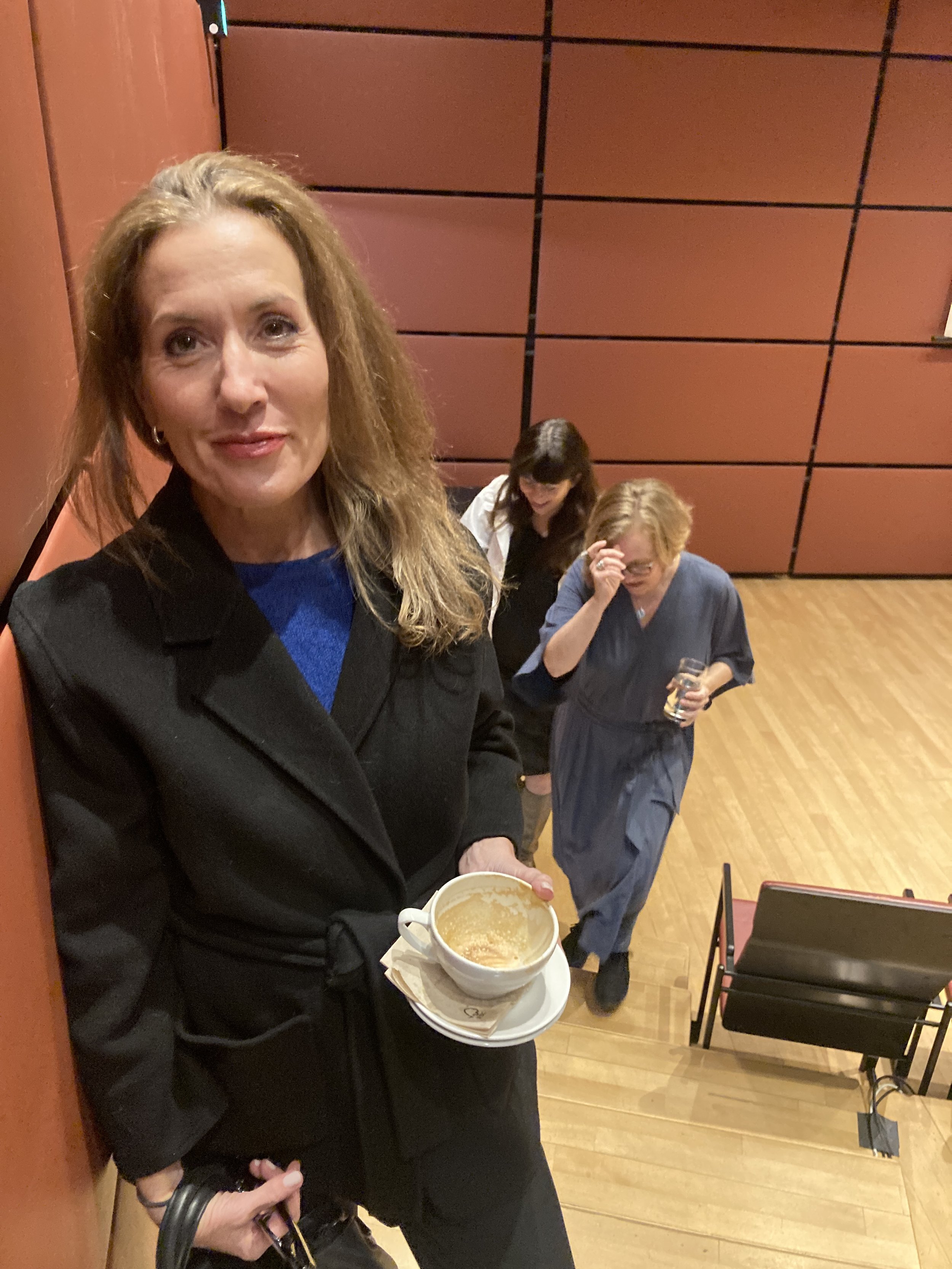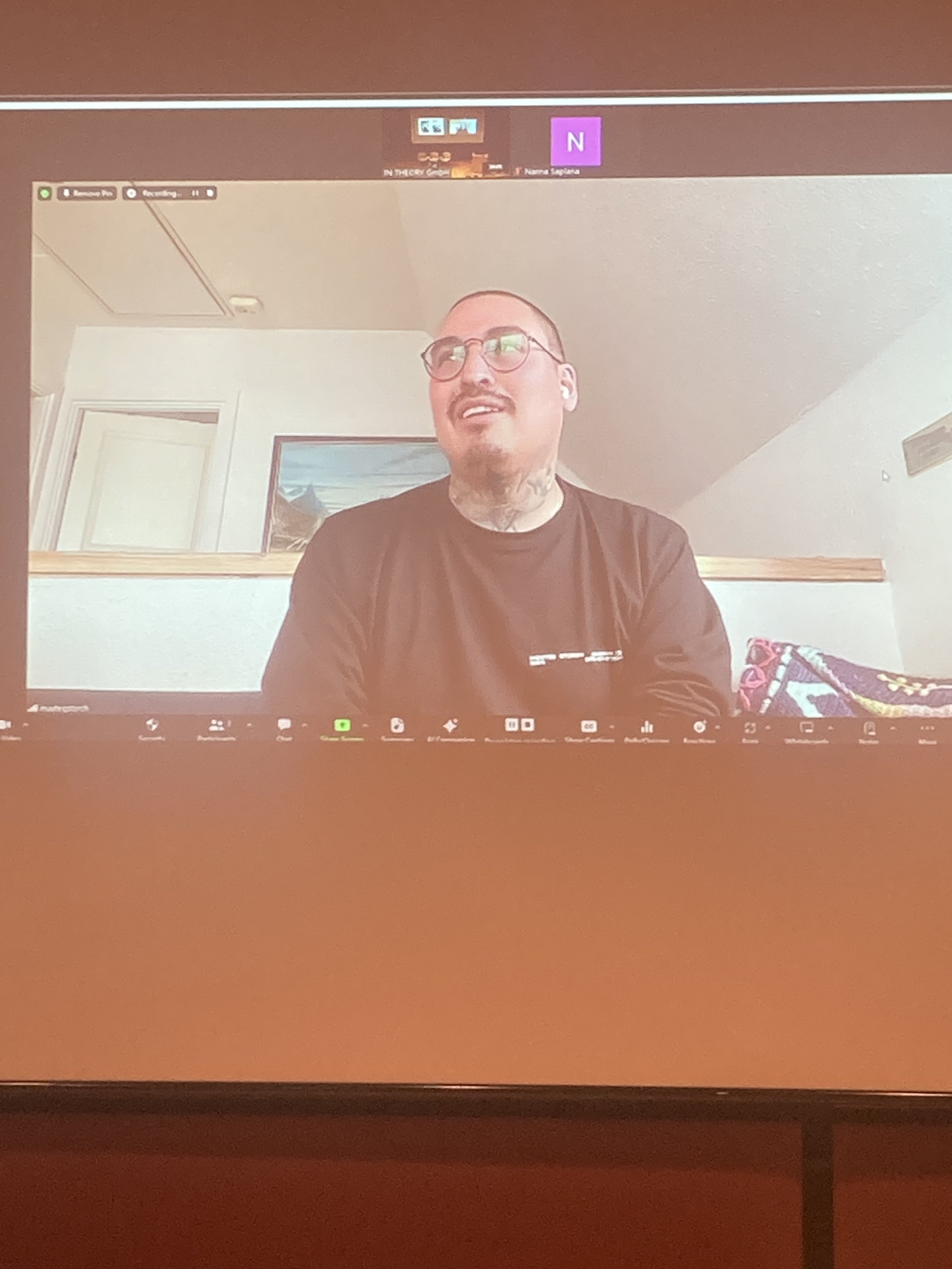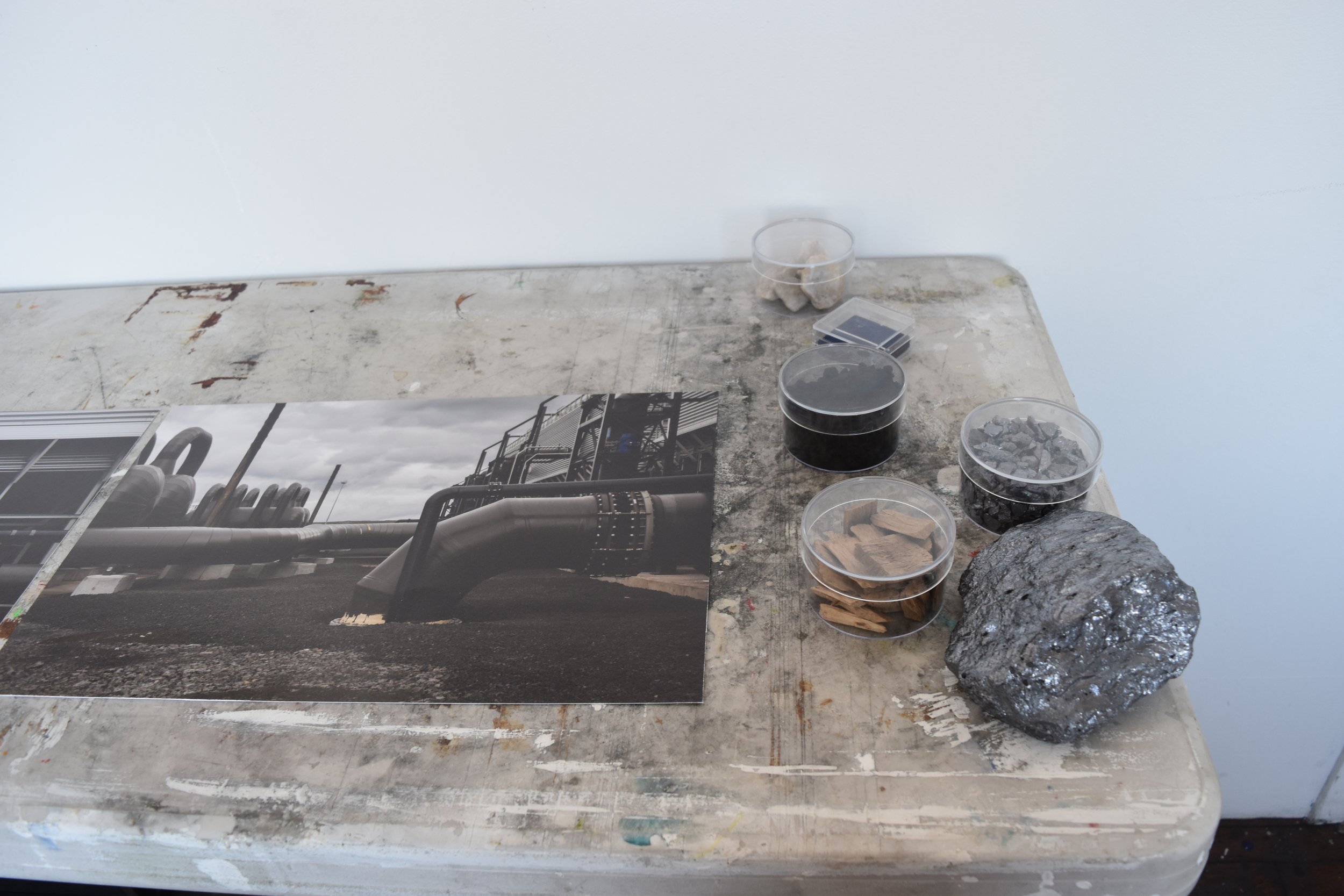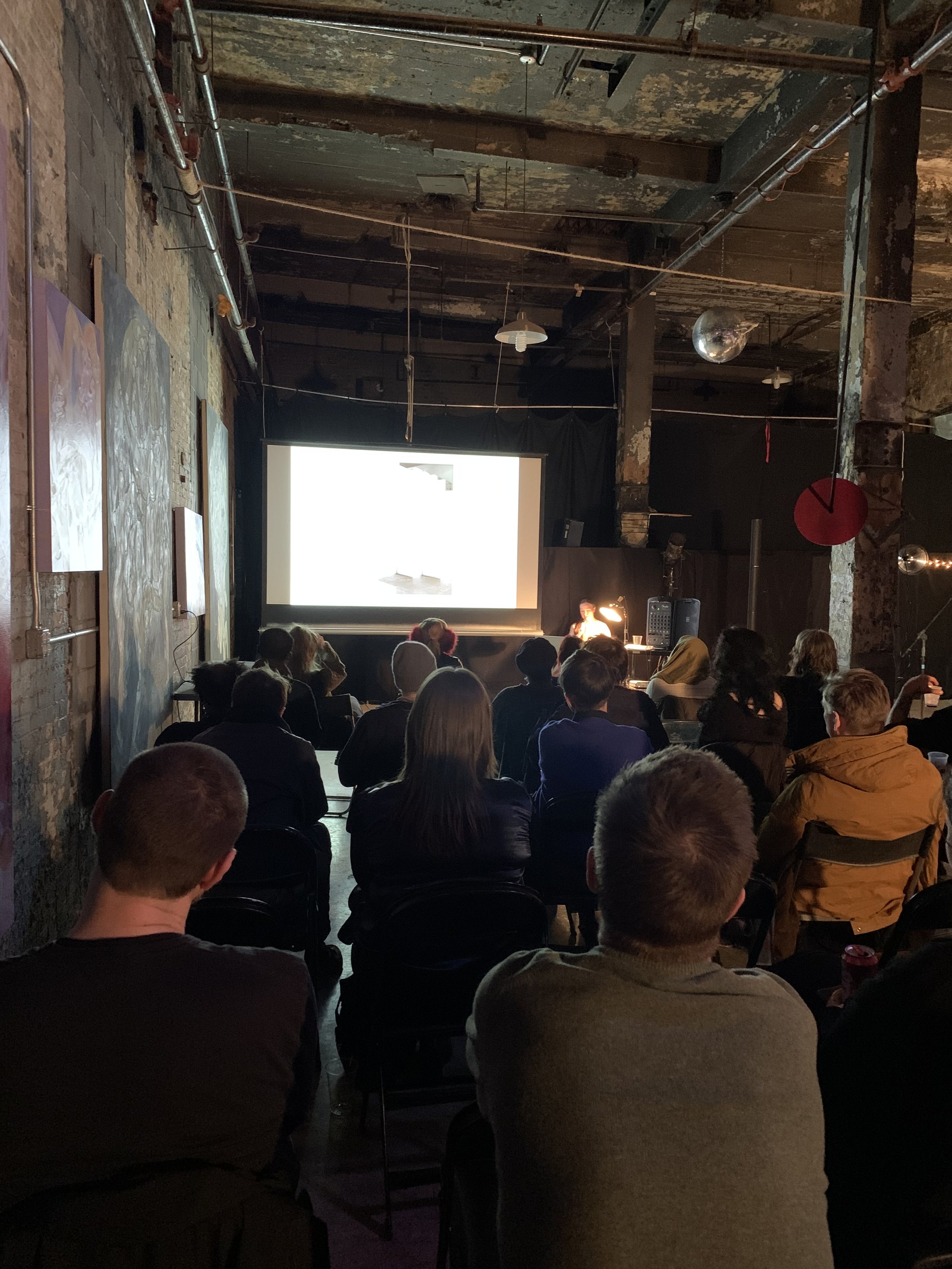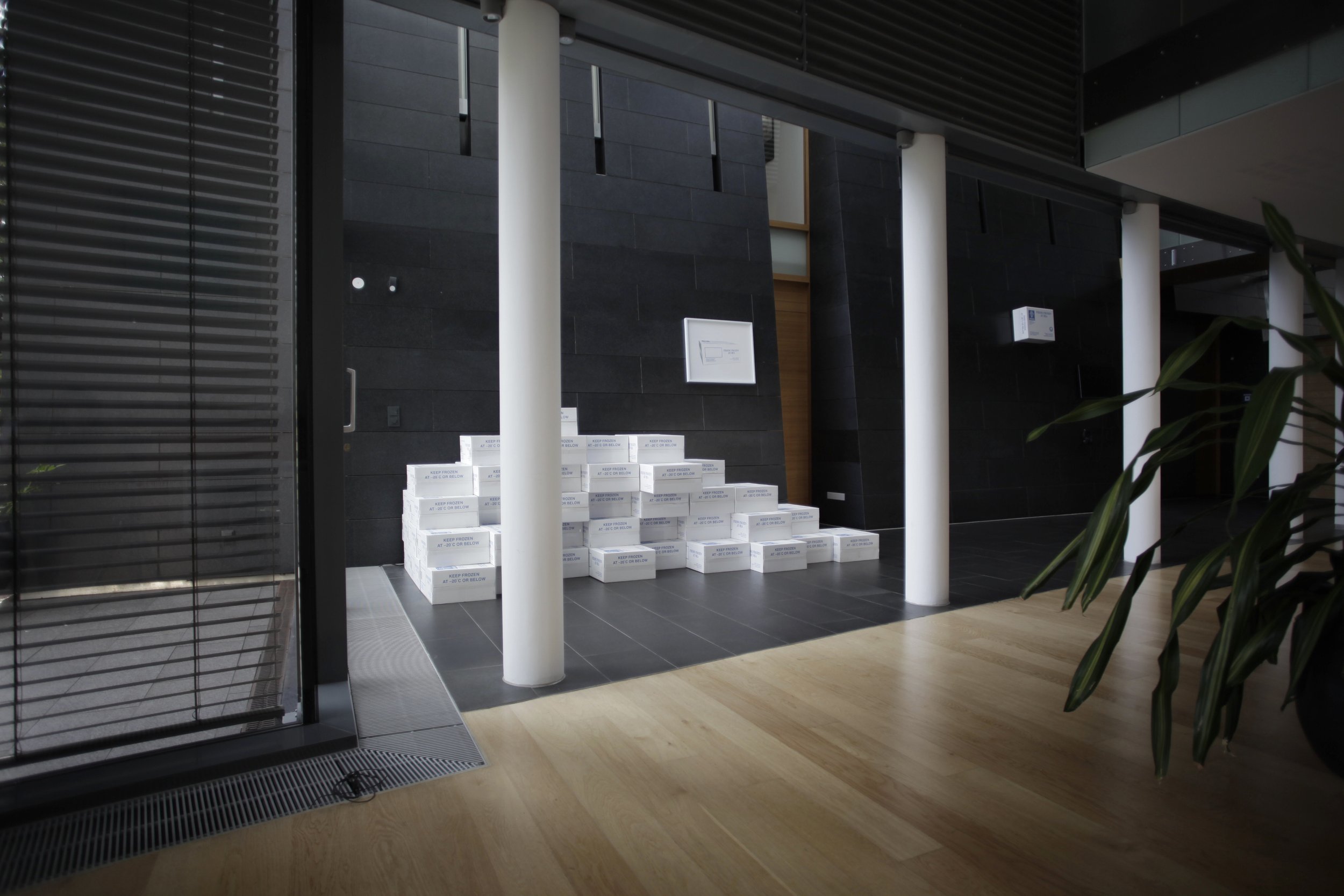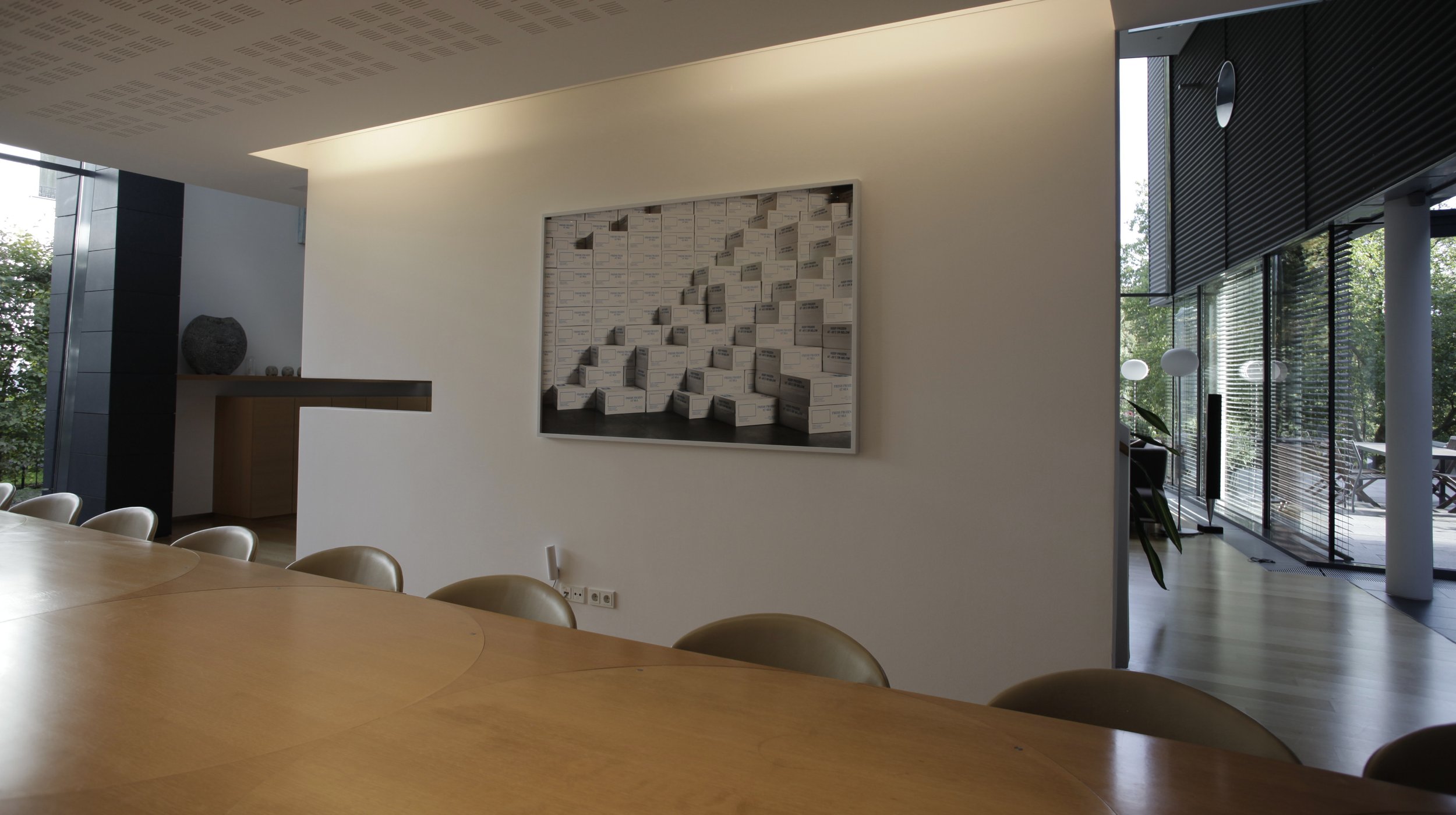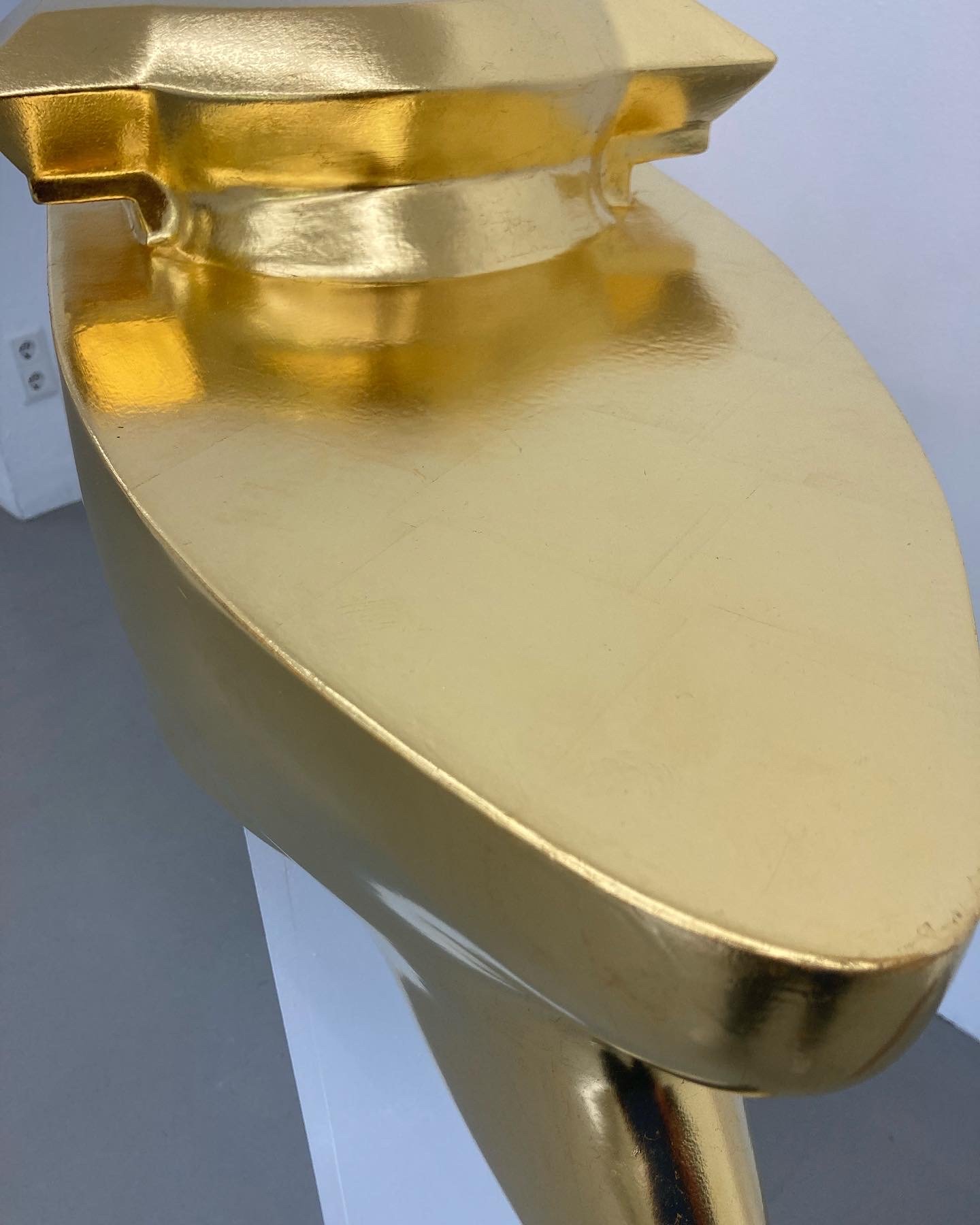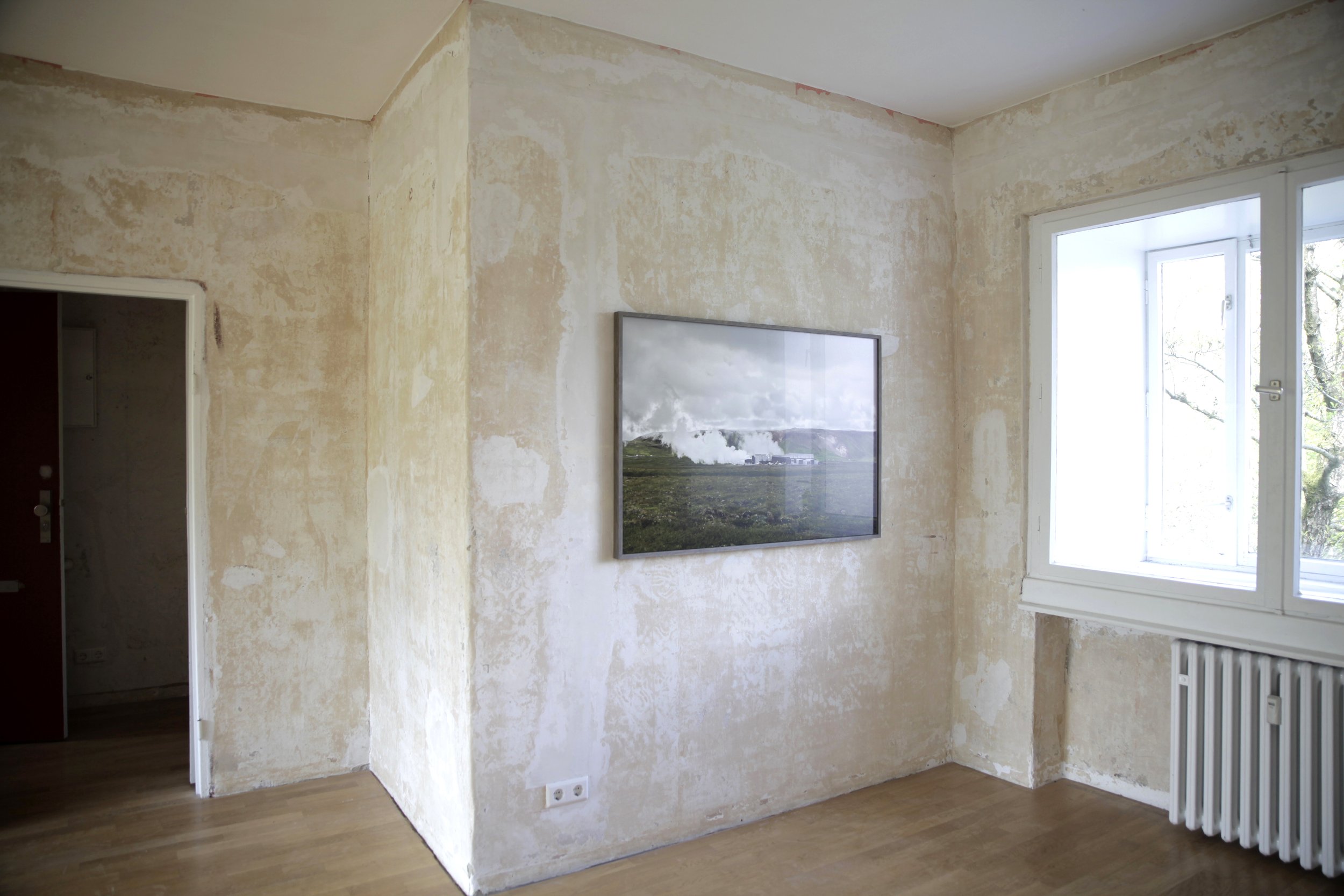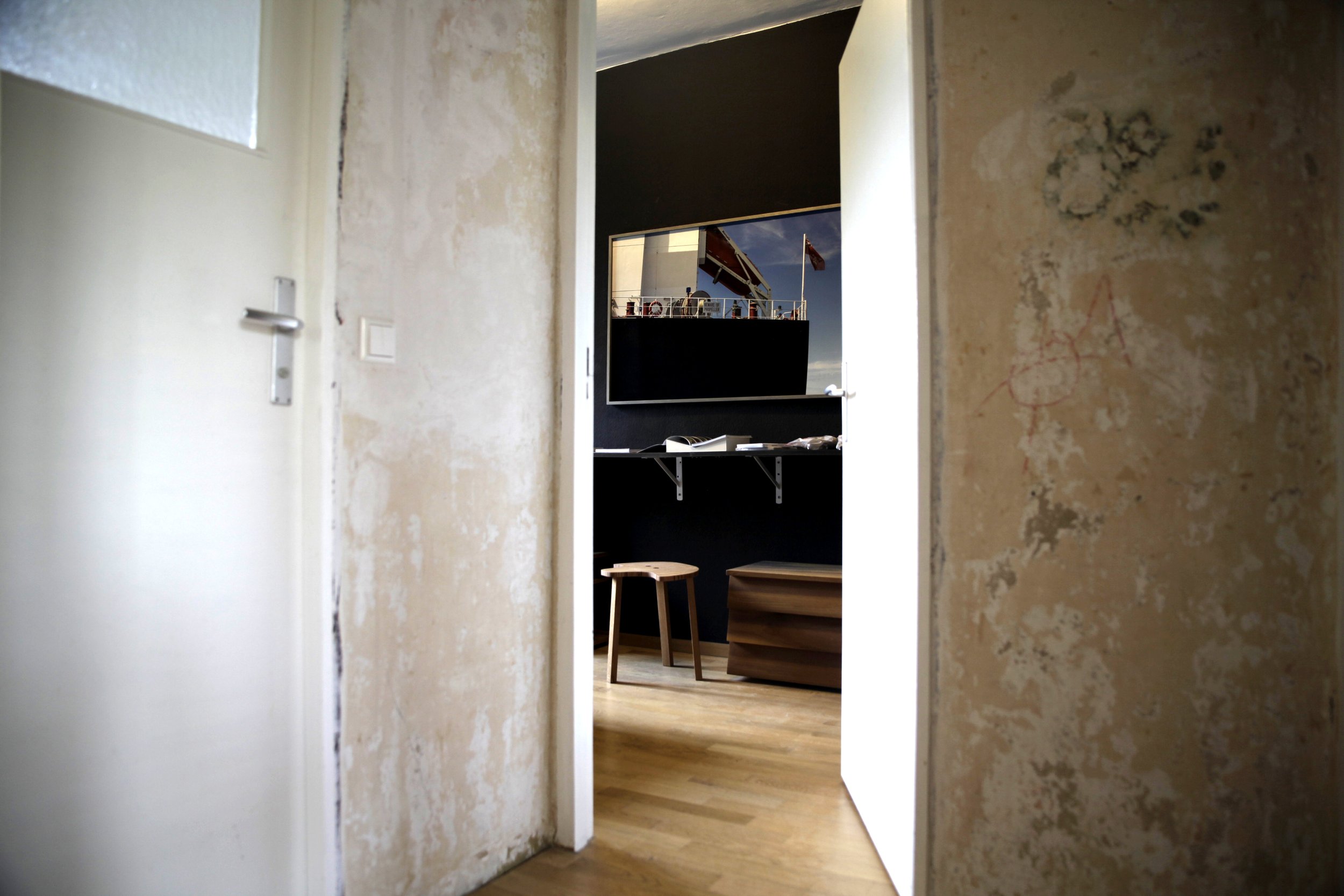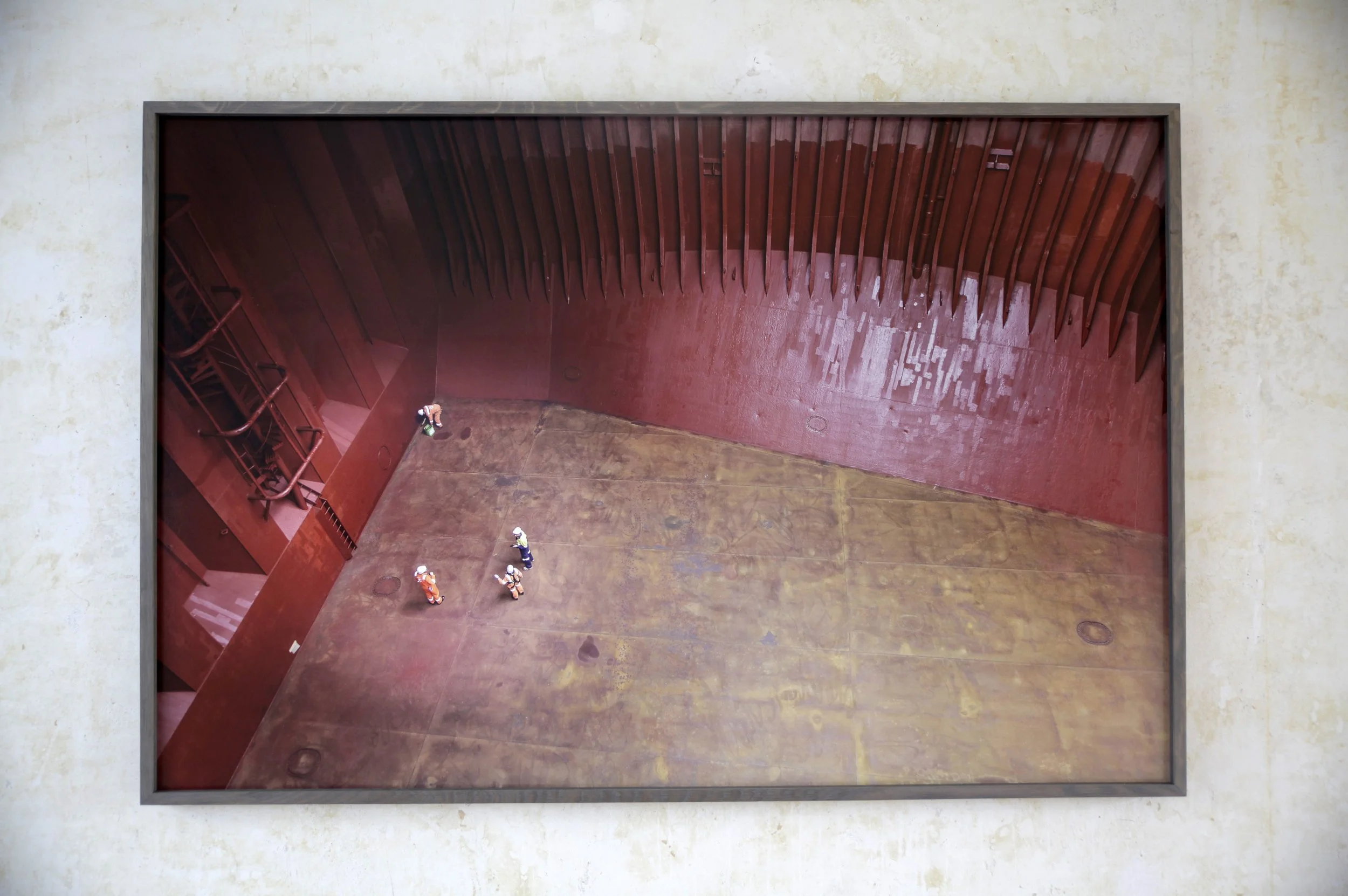Participation at Positions Art Fair, Berlin with Gallery Gudmundsdottir
Gallery Gudmundsdottir, Berlin exhibited Hulda Ros Gudnadottir, Ivy Lee and Kolbeinn Hugi at Positions Art Fair September 2024.
Gallery Gudmundsdottir booth at Positions Art Fair 2024. Photo by Dennis Helm.
Shipyard Paintings (206) and Golden Ship (2016) by Hulda Ros Gudnadottir at Positions Art Fair. Photo by Dennis Helm.
From left to right: Ivy Lee, Gudny Gudmundsdottir and Hulda Ros Gudnadottir. Photo by Dennis Helm.
From left to right: Gudny Gudmundsdottir, Ivy Lee and Hulda Ros Gudnadottir. Photo by Dennis Helm.
Gallery Gudmundsdottir booth at Positions Art Fair 2024. Works by Hulda Ros Gudnadottir, Kolbeinn Hugi and Ivy Lee. Photo by Dennis Helm.
Symposium 'The Great Defrost' at Felleshus Nordic Embassies Berlin
On the 13th of September 2024 a symposium curated by Hulda Ros Gudnadottir with Gallery Gudmundsdottir as an organiser and Wayra Schübel as communication officer, was held as a one day even at the Felleshus in Berlin.
See Gallery Gudmundsdottir website for more detail.
Curator: Hulda Rós Guðnadóttir
Moderator: Julieta Aranda
With keynotes and inputs by: Elisabeth Brun, Katla Kjartansdóttir, Anamaría Garzón Mantilla, Marina Fokidis, Delhia Hannah, Camilla Skovbjerg Paldam, Inuuteq Storch
Funded by the Nordic Culture Fund in collaboration with Gallery Gudmundsdottir.
Publication DISTANZ Verlag
Katla, Julieta and Camilla.
Anamaría and Marina.
Guests and embassy staff in good spirit.
Anamaría and Julieta.
Anamaría with an unusual position.
Anamaría, Julieta and Marina.
Curator, writer, researcher and moderator Cassandra Edlefsen Lasch.
Quite a few people came through on a busy Berlin Art Week.
Kimberly Bradley
Archive images from Sumarlidi Isleifsson PhD research
Katla and Elisabeth.
Moderator in action.
Respondent par excellence.
Artist Clemens Wilhelm from Hilberraum Berlin was in the audience.
Dehlia Hannah responding to Elisabeth Brun’s keynote.
After a busy day of taking in a lot of new perspectives artist Inuuteq Storch invited us into his living room in Sisimiut, Greenland.
Awarded a publishing grant from The Icelandic Visual Art Copyright Association
Photo Daniel Leeb from The Icelandic Visual Art Copyright Association news release
I am honored to announce that I have been awarded a publishing grant from the The Icelandic Visual Art Copyright Association. This grant supports the publication of a monograph by Distanz Verlag in Berlin, focusing on my 'Keep Frozen' art practice as a research project. The publication is a collaboration with Gallery Gudmundsdottir in Berlin and will coincide with a solo exhibition at Spark Art Fair, Vienna in March and at the gallery during Gallery Weekend in Berlin in 2025.
Further information:
Public lecture at Iceland University of the Arts - Department of Fine Arts
5th of April 2024
♪ Yah, working on the edge ♪ [guitar riffs breakout]
In her lecture, Hulda Ros Gudnadottir explores her art-practice-as-research, merging contemporary art and filmmaking that operates beyond academic institutions, blending qualitative anthropology and artistic methods. Hulda will spotlight her method of transitioning between mediums, probing fundamental questions about each medium's qualities, functions, as well as expectations towards it. She will particularly explore the nuanced boundaries between objectivity, documentation, reality, and fiction, in the realm where documentary and contemporary art converge.
Awarded Prestigious Publishing Grant by the Icelandic Arts Council / Icelandic Visual Arts Fund
I am honored to announce that I have been awarded the highest grant, approximately 11,000 Euros, in the spring allocation from the Icelandic Arts Council’s Visual Art Fund. This grant supports the publication of a monograph by Distanz Verlag in Berlin, focusing on my 'Keep Frozen' art practice as a research project. The publication is a collaboration with Gallery Gudmundsdottir in Berlin and will coincide with a solo exhibition at the gallery during Gallery Weekend in Berlin in 2025.
The Icelandic Arts Council is committed to fostering artistic excellence and facilitating artistic dialogue through various initiatives and grants. The publishing grant highlights the organization's dedication to nurturing Icelandic contemporary art talents in the global art community. The Icelandic Art Center is the grant’s facilitator for the Icelandic Arts Council.
Further information:
Picture courtesy of the Icelandic Art Center originally published on the website of the center and shows the recipients spring 2024 that were able attend the ceremony.
Residency at International Studio and Curatorial Program, NYC in 2023 with support from The Icelandic Art Fund and The Icelandic Copyright Association
Pictures taken by ISCP interns Kim Chan and Leslie Read in my atalier @iscp_nyc during the first part of my residency there in February and March 2023. I will return to the residency on the 1st of November 2023
6th of May 2023 Gæp Gallery, Bucharest.
Screening of ‘Ocean Glory’.
Artist talk 'Artist at Work' at International Studio and Curatorial Program, NYC on March 28th 2023
The talk was broadcasted live on ISCP instagram page.
Screening at Anda&Fala
Screeening of Keep Frozen at Anda&Fala - Associação Cultural, Ponta Delgada, Azores islands in March 2023
As part of their partnership with Anda and Fala ‘Temporadas de Vaga’ in the Azores Island Cycle Music and Art Festival curated a screening of Keep Frozen at the cultural center located in Ponta Delgada in March 2023.
Artist Talk at 'Mothership' saloon at Last Frontier in New York City, March 2023
The saloon was co-produced by NOoSPHERE Arts and supported by the Icelandic Consulate in New York City.
The Ghostnet and the Buyo at Great Patch group exhibition in Kraków
GREAT PATCH 28.10-01.12 2022 at UFO gallery, Kraków, Poland.
Installation view of the exhibition. In the forefront is a wall drawing as result of the Buyo reflection and The Ghostnet. The Buyo was shown as a kinetic hanging sculpture rotating in circles throwing a room sized animation on the walls. In the next room one can see ‘Broad Daylight All Night’ by Magdalena Lazar. Photo by Szymon Sokołowski.
ARTISTS: Hulda Rós Gudnadóttir, Sabina Kaluza, Magdalena Lazar, Karolina Melnicka, Michal Smandek, Anna Sztwiertnia and Linda Poninska.
Curated by Weronika Ptak.
Installation view of the exhibition. To the left in the inner room one can see The Buyo. In the main room ‘Satan Petit-Cœur 2.0’ by Karolina Mełnicka. Photo by Szymon Sokołowski.
Installation view of the exhibition. In the forefront is The Buyo with a wall reflection and The Ghostnet. Photo by Szymon Sokołowski.
Installation view of the exhibition. In the forefront is a wall drawing as result of the Buyo reflection and The Ghostnet. The Buyo was shown as a kinetic hanging sculpture rotating in circles throwing a room sized animation on the walls. Photo by Szymon Sokołowski.
WERK at the Residence of the Icelandic Ambassador to Berlin summer 2022
Collaboration with Gallery Gudmundsdottir, Berlin
Participation in an academic conference in the Faroe Islands
‘Iceland and the Faroe Island seen from within and without: cross-cultural perspectives 17th - 21st century at Sjóvinnuhúsið (Fróðskaparsetur Föroya - University of the Faroe Islands) June 14 - 16 2022 with scholars Joanna Kodzik, Karen Oslund, Bergur Rönne Moberg, Ann-Sofie Gremaud, Bergur Djurhuus Hansen, Jan Borm, Arnar Eggert Thoroddsen, Knút Háberg Eysturstein, Malan Marnesdóttir, Katrín Anna Lund, Robert O. Nilsson, Kristín Ingvarsdóttir, Sumarlidi Ísleifsson, Alexandre Delangle, curator Kinna Poulsen, writers Carl Jóhan Jensen and Hallgrímur Helgason and visual artist Hulda Rós Gudnadóttir.
View from Sjóvinnuhúsið over Tórshavn harbour.
Organized by the University of the Faroe Islands in cooperation with the University of Iceland and UVSQ/Université Paris-Saclay by Dr. Jan Borm from UVSQ, Dr. Bergur Djuurhus Hansen from University of the Faroe Islands and Dr. Sumarlidi R. Ísleifsson from the University off Icleand.
Publication next year by Brill Academic Publishing as part of the “Arctic Humanities” series.
Participation with the 'Golden Ship' sculpture in group exhibition The First Day
A Group Exhibition
THE FIRST DAY
28. July - 9. September 2022
Gallery Gudmundsdottir, Berlin-Mitte
The First Day offers a reflection on the human condition and our place in the cosmos. These works open our imagination to fathom the vast and strange expanse of the universe and its possible worlds, with our earth sitting seemingly calm in its time/space vortex.
At Gallery Gudmundsdottir, Joachimstrasse 17, Berlin-Mitte. ‘The First Day’
“On the first day, God created light in the darkness.”
Genesis stories are a part of virtually every culture, with human imagination aiming to solve the mysteries of the creation of our world and existence, seeking to give direction and meaning to our lives. The theme of light is ever present in bringing about the first day, but in a most general way “a universe comes into being when a space is severed” (Spencer-Brown). As such, modern scientific cosmogony follows in these footsteps: the big bang as an explosive severance of an original singularity; the CMB (cosmic microwave background) or relic radiation as a universal shimmer of light remaining from the moment the first atoms formed and the universe became transparent; the birth of the first stars some 13.6 billion years ago, which the James Webb Space Telescope promises to capture live.
Even if we see resemblances, modern cosmogony does not pertain to give direction and meaning to our existence, for it has cut all its ancient ties with cosmology. Science, its foundation, provides means, but neither meaning nor ends. And thus, we today might side with the 18th century German physicist and philosopher Georg Christoph Lichtenberg, who, when learning of Wilhelm Herschel’s discovery of Uranus as the first new planet since antiquity, wrote in his sudelbücher: „To invent an infallible cure for toothache by which it might be immediately arrested, could well be worth as much and more than the discovery of yet another planet. “
THE FIRST DAY features work by Sarah Ancelle Schönfeld (1979), Gudny Gudmundsdottir (1970), Björg Thorsteinsdóttir (1940 –2019), Hulda Rós Gudnadóttir (1973), Anna Júlía Friðbjörnsdóttir (1973) and Erla S. Haraldsdóttir (1969), presenting a reflection on the human condition and our place in the cosmos. These works open our imagination to fathom the vast and strange expanse of the universe and its possible worlds, with our earth sitting seemingly calm in its time/space vortex. And they direct the view to the other side of creation, out seemingly supreme directive to, as Genesis 1.28 has it, subdue the earth, and the futures this may bestow on us.
At Gallery Gudmundsdottir, Joachimstrasse 17, Berlin-Mitte. ‘The First Day’ - Erla Haraldsdóttir, Anna Júlía Friðbjörnsdóttir
At Gallery Gudmundsdottir, Joachimstrasse 17, Berlin-Mitte. ‘The First Day’. ‘Golden Ship’ by Hulda Rós Gudnadóttir
At Gallery Gudmundsdottir, Joachimstrasse 17, Berlin-Mitte. ‘The First Day’ - Sarah Ancelle Schönfeld, Björg Thorsteinsdottir
At Gallery Gudmundsdottir, Joachimstrasse 17, Berlin-Mitte. ‘The First Day’ - Gudny Gudmundsdottir
At Gallery Gudmundsdottir, Joachimstrasse 17, Berlin-Mitte. ‘The First Day’ - Erla Haraldsdóttir
At Gallery Gudmundsdottir, Joachimstrasse 17, Berlin-Mitte. ‘The First Day’ - Björg Thorsteinsdottir
At Gallery Gudmundsdottir, Joachimstrasse 17, Berlin-Mitte. ‘The First Day’ - Sarah Ancelle Schönfeld
installed at HilbertRaum, photo: Clemens Wilhelm
Screening of videoworks from the Keep Frozen research project at Hilbertraum Berlin
Part of Spotlights program curated by Wilhelm Clemens at Hilbertraum 24th of September 2022
6 artists´ videos in 6 days plus 6 screenings 23.09 - 02.10.2022
#1 Tobias Yves Zintel,
# Hulda Rós Gudnadóttir
#Kim Schoen
#Sajan Mani
#Adnan Softic
#Juliane Zelwies
The Hibiscus flower is breath-taking but only lasts for 1 day.
SPOTLIGHTS presents a focussed view on 6 artists’ videos.
For only 1 day, each artist gives a solo presentation of 3 works installed at HilbertRaum.
On all 6 evenings, there are screenings of works by the artist-of-the-day at 7pm.
Prepare for a trip into the mind of an autistic child, into the hard work life on the docks of Reykjavik, into a German factory for fake books, into a fake Indian history, into the fake history of Europe, to the Norwegian trauma island Utøya, and so much more…
Exhibition at Scharaun, Siemensstadt-Berlin in May and June 2022
Now on Artsy with Gallery Gudmundsdottir
Gallery Gudmundsdottir Berlin
Hulda Rós Gudnadóttir is represented by Gallery Gudmundsdottir in Berlin. She had her first solo exhibition with the gallery in autumn 2021. Here is a link to the text by Kimberly Bradley that presents and contextualizes the works in the exhibition.
Fjölfeldi - Hlutfeldi - Margfeldi : www.multis.is
Multis is an internet based gallery that sells multiples by Iceland´s foremost contemporary artists. It is run by its founders Ásdís Spanó and Helga Óskarsdóttir who both have a long history of promoting and curating Icelandic art. Among the items on sale is Hooked, a multiple from the Keep Frozen series.
Multis ships worldwide.
In Autumn 2021 the Reykjanes Art Museum that is situated on the shorefront close to the international airport and the city of Reykjavik invited Multis to exhibit the multiples they have on sale in a traditional art exhibition environment.
The exhibition text:
Being able to create more than one copy of the same work has long followed the artist tradition. Many artists have created such works, which offers a different possibility than the unique artwork, and can be considered as an object somewhere between art and production. Works made in multiple copies are priced differently, are cheaper and thus made accessible to a larger group. The work goes from the standpoint of the individual and becomes an object that more than one can own, they are often smaller, and confirm their value not only by being a work by a certain artist, but also by being numbered and signed editions and then become part of a larger context, a narrative that is important to the person who acquires the work.
Multiples can be two- or three-dimensional and can be created using a variety of methods. In the fifteenth century, artists began to develop methods for molding works, as it was considered a great advantage to be able to distribute works as widely as possible. This led to a significant development of visual culture in the countries where the knowledge was available. In the eighteenth century, for example, artists invented methods that enabled them to create sculptures from, for example, clay, bronze or plaster and porcelain. Casting sculptures using mold or sand became popular in the production of works made in editions and these methods are still widely used in the making of art today. The methods of the graphic arts also fall under this definition, but works made in such a way have the undoubted advantage that it is easy to make the same work in many copies.
With the method of copper plating in the Baroque period, the distribution and reproduction of works of art became more general. The copper insert is a method used to make graphics, where the image is engraved with a needle in a copper plate and then printed on paper. The work Los caprichos, 1797 by Francisco Goya, was one of the first known multiples created in a limited edition. Looking at twentieth-century works of art, the work of Marcel Duchamps, Rotoreliefs from 1935, is one of the first multiples of modern art and in the form of multiples we know today, a series of six rotating discs, published in 500 copies.
The exhibition FJÖLFELDI - HLUTFELDI - MARGFELDI focuses on the works of twenty-nine contemporary artists who have worked for longer or shorter periods in creating multiples. In order for a work of art to fall under that definition, the works must be made in three or more copies.
The word HLUTFELDI is created by Magnús Pálsson, but in the exhibition you can find most of the works where he works in this way. The exhibition includes Magnús’ works that are still in the possession of the artist and his family, but many of his works are now owned by museums and collectors. Other works in the exhibition are made in a conversation with the MULTIS project over a two-year period.





